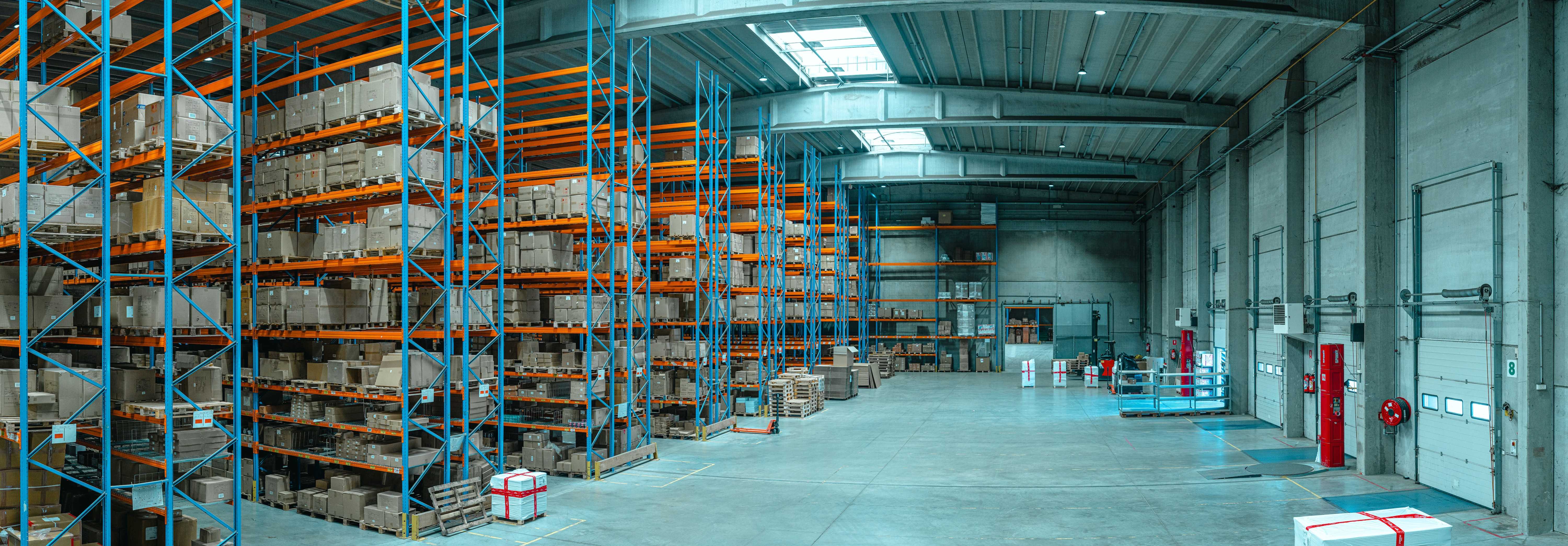3PL for Retailers
Why Third-Party Logistics (3PL) is a Game Changer for Retailers
3PL is a game changer that comes with management challenges
In large-scale retail organizations, managing the flow of goods from suppliers to warehouses to shelves to customers is a daunting, complex task. Imagine having a team that takes over the heavy lifting of getting your products to your customers. That's what 3PL providers do. These experts manage your goods' storage, handling, and transportation, ensuring they reach their destination efficiently. This partnership allows you to focus on what you do best—growing your brand and nurturing your customer base—while your logistics partner ensures your operations run smoothly behind the scenes. It's like having a silent partner dedicated to streamlining your supply chain, so you can keep your eyes on the prize: your business growth and customer satisfaction.
Some Real-World 3PL Scenarios
Imagine you're running an online fashion boutique. By partnering with a 3PL provider, you're entrusting them with your entire inventory. They store your latest lines in their warehouse, pick and pack each order as it comes through, and handle the shipping logistics from their door to your customers. This setup allows you to focus your energy on curating that perfect collection and marketing your brand without worrying about packing boxes or negotiating shipping rates.
Now, let's shift gears to a scenario where you use a 3PL service exclusively for "last mile" delivery. Picture this: you're a local artisan food producer selling gourmet jams. You handle the production and packaging; maybe you even have a small shop where customers can browse. But when it comes to online orders, you tap into a 3PL provider just for the delivery part—ensuring that your delicious creations reach your customers fresh and on time. This strategy lets you maintain control over the production and packaging while offering home delivery convenience.
Both approaches offer unique benefits tailored to fit your retail operation's specific needs and scale.
Strategizing the Management of Logistics and 3PL Partners
For a small retailer with one or a few locations, managing a single 3PL partner likely is straightforward. You're coordinating with one team, focusing on optimizing a direct line of logistics tailored to fit a specific set of needs. The effort required is manageable, with communication and adjustments flowing through a singular channel.
However, if your retail operation includes dozens or hundreds of locations, each possibly with its own unique demands, the complexity skyrockets. Imagine juggling multiple 3PL partners, each responsible for different regions or product lines. The scale of effort multiplies as you work to ensure consistency in service quality, negotiate contracts, and maintain clear communication across various teams and time zones.
This scenario requires robust management strategies, often leveraging technology to keep track of performance metrics, streamline communication, and ensure a cohesive operation despite the geographical and operational diversity. Your strategies have to accommodate complex challenges:
Order Management Complexity. Juggling orders across multiple locations and 3PL providers requires sophisticated systems to ensure accuracy and efficiency.
Rising Shipping Costs. With an expanded operation, negotiating cost-effective shipping rates becomes more challenging, impacting your bottom line.
Packaging Consistency. Maintaining your brand's packaging standards across different 3PL partners and locations can be difficult, potentially affecting customer experience.
Regulatory Compliance. Ensuring each 3PL partner complies with regional, national, and international regulations demands constant vigilance and coordination.
Navigating these challenges requires a strategic approach and demands the adoption of technology to maintain oversight and control.
The Compelling Case for Automating 3PL Management
Automation reduces human error, speeds up transaction times, and provides actionable insights through data analytics. This digital transformation enables you to optimize inventory levels, improve order accuracy, and deliver a superior customer experience. Essentially, it's about doing more with less and scaling your business sustainably.
The difference is stark when comparing the cost of managing your 3PL provider the old-fashioned way versus automating the process. Manual management often involves countless hours coordinating with different partners, dealing with paperwork, manually moving data across incompatible systems, and troubleshooting errors, all of which translate into significant labor costs and time. While seemingly saving on upfront technology investment, this do-it-yourself approach leads to inefficiencies, higher chances of error, and a slower response to market changes.
By contrast, automating 3PL management brings everything into a streamlined, efficient system. Automation can significantly reduce the time spent on manual tasks, lower the risk of errors, and improve order processing speed. It's not just about cutting costs; it's about enhancing your operation's agility. The initial investment in automation technology pales in comparison to the long-term savings and increased revenue potential from faster, more reliable operations. Automating 3PL management is not an expense; it's an investment in growing your business more sustainably and profitably.
Rivet Automates 3PL Management
Rivet, Traverse Systems’ business process automation solution, combines software and professional services to automate your preferred process for managing 3PL providers.
Rivet automates previously manual and ad hoc business processes. It is a single platform that replaces email, spreadsheets, task management software, and the other software and manual processes you and your customers and partners use today.
Rivet ensures that:
- Process-specific data is identified and sourced from existing documents, data, and, where desired, data repositories and applications
- Process tasks and responsibilities are assigned and tracked automatically
- Data collection is automated pursuant to your privacy, security, and approval requirements
- Alerts notify appropriate personnel of erroneous, incomplete, or late tasks
- Redlining, review, and approval of documents are shepherded automatically
The result is an automation-driven experience that supports the online completion, tracking, and verification of all documents, signatures, and approvals. You and your customers and partners are provided context-appropriate tasks, data, supporting documentation, follow-up actions, and alerts. And online dashboards offer real-time status of everything the blueprint drives and manages.
Rivet directly addresses a variety of 3PL management challenges, including
Carrier Onboarding. Rivet collects and manages data from federal registration and regulation information to insurance requirements, cargo limitations, safety and rating documentation, licensing and bond documentation, trailer and asset tracking, EDI integrations, and more.
Retail Compliance and Claims Management. Rivet helps you better position yourself to manage chargebacks. Its dispute workflow management features establish a documentation trail that includes photos, spreadsheets, emails, forms, proof of inspection, and more, across your company’s departments.
Customer Management. 3PL management involves recurring and often time-sensitive requirements, including terms and conditions to annual certificates of insurance (COI) and numerous other contractual or regulatory documents and processes. Rivet captures these requirements and ensures they are proactively amended and approved.
Rivet generates significant labor savings through automation, typically two or more full time employees. It standardizes your processes, regardless of the underlying uniqueness of each party or customer, automating deadline tracking and follow-up and alerting appropriate personnel of errors or issues. Our customizable dashboards provide visibility into the status of processes, risk exposure, and the need for action.



